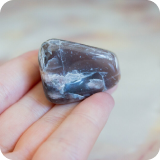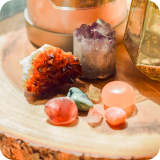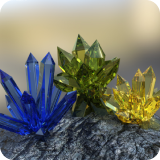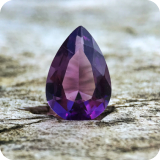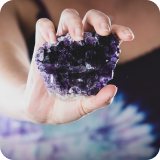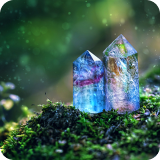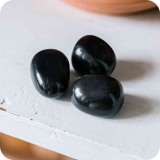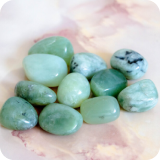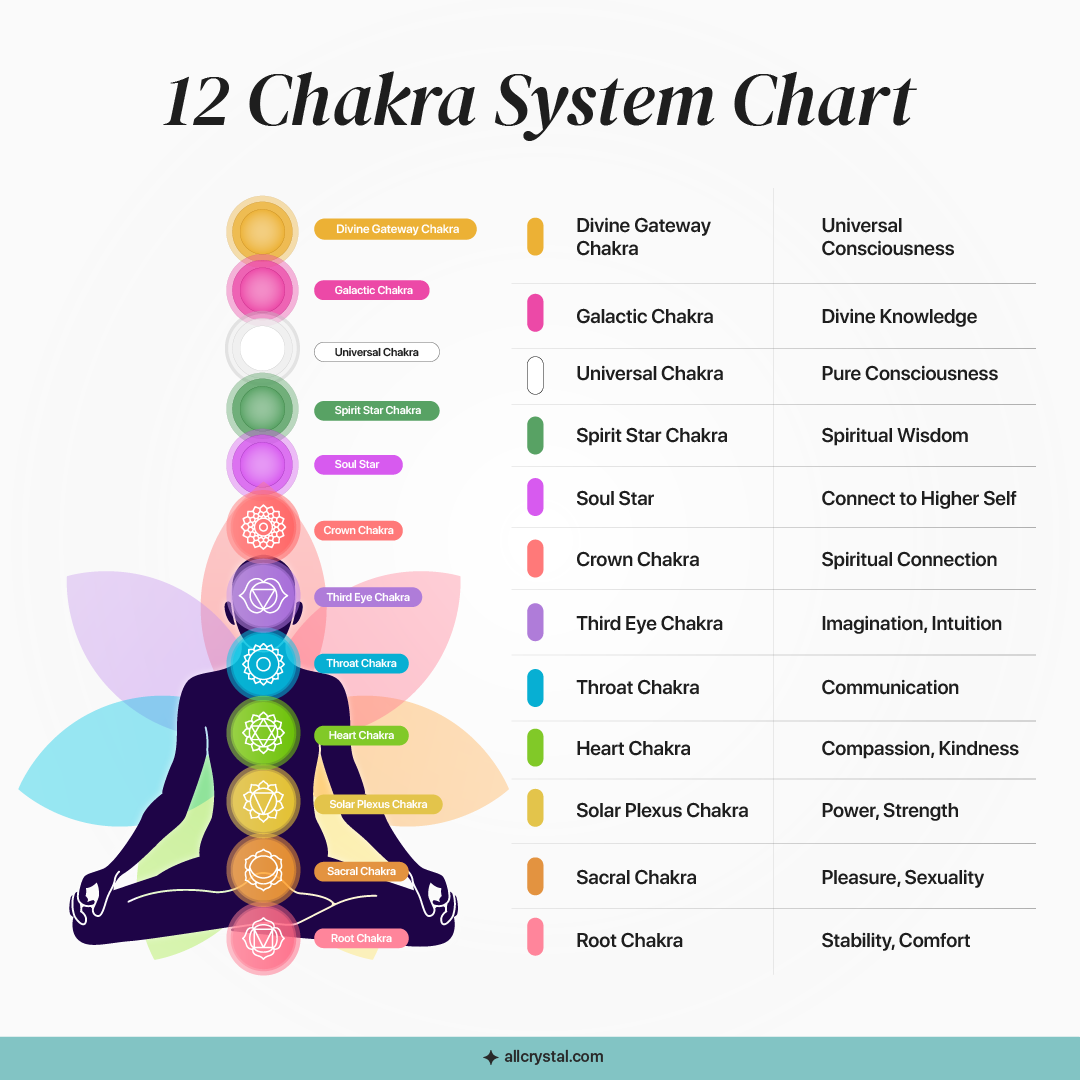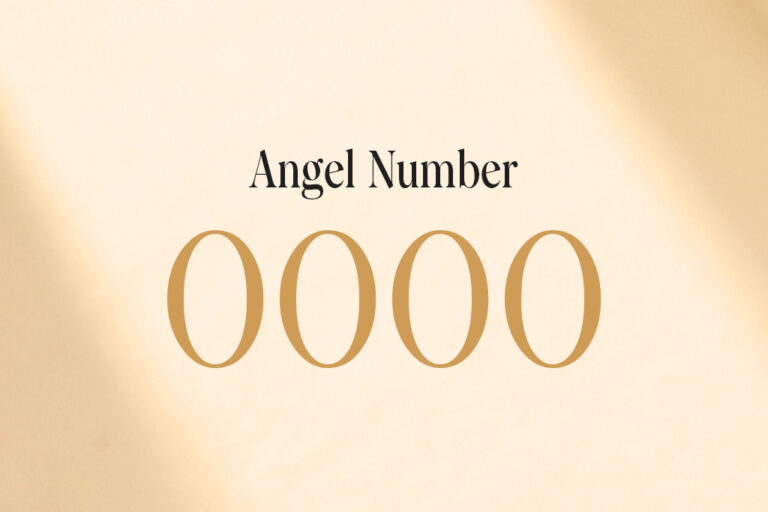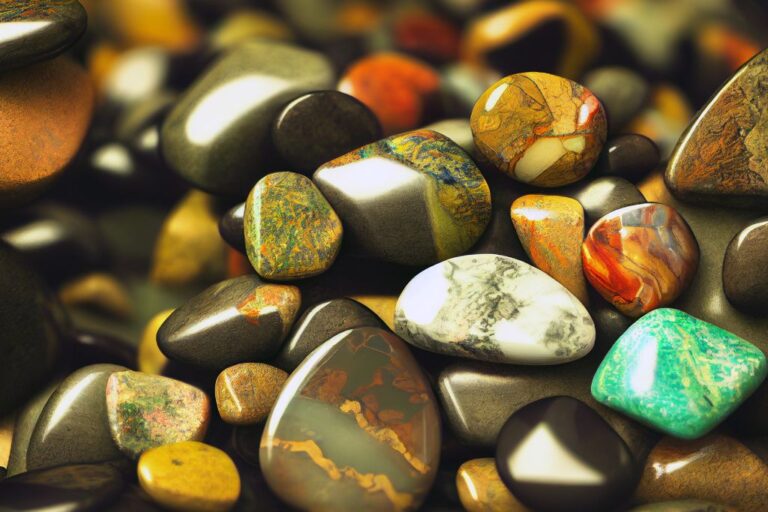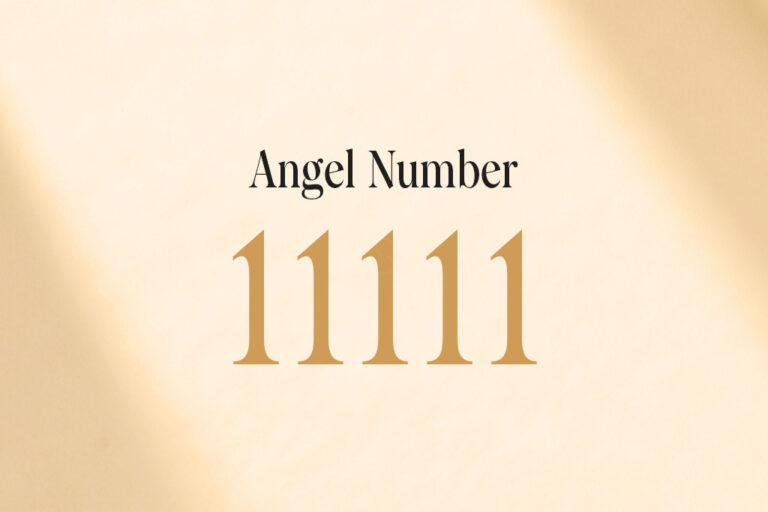Rosasite
(roh - zuh - sahyt)What is Rosasite?
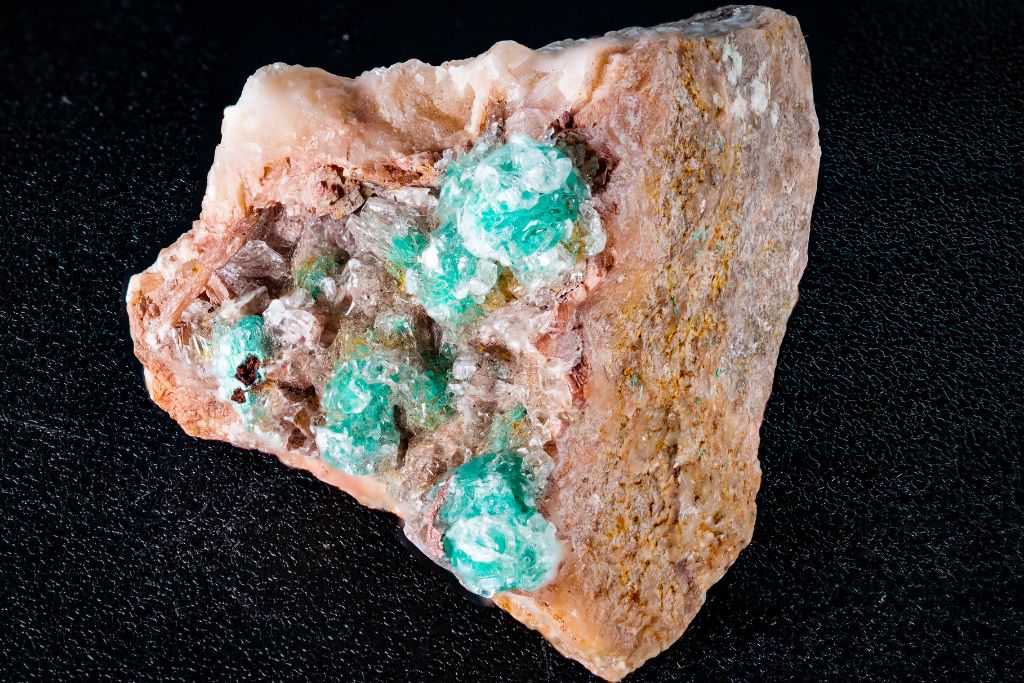
Rosasite is a rare mineral known for its pink or rose-red color and delicate texture. It often appears as botryoidal formations or crusts on other minerals, adding to its unique beauty.
Rosasite belongs to the carbonate group with a chemical composition that includes copper, zinc, carbon, oxygen, and hydrogen. Its moderate hardness (4 on the Mohs scale) allows it to be scratched by harder minerals while being able to scratch softer ones.
Discovered in 1908 in Italy, Rosasite has a fascinating history as a sought-after mineral among collectors. Its rarity and aesthetic appeal have made it a valuable addition to mineral collections in locations such as Australia, Mexico, and the United States.
Rosasite’s vibrant color and distinct formations captivated Crystal enthusiasts and collectors. Its delicate beauty makes it highly prized, serving as a natural work of art. Additionally, some believe in its metaphysical properties, attributing enhanced communication, intuition, and emotional healing qualities.
Did you know that Rosasite is believed to possess a calming effect on the mind and emotions? Many claim it can alleviate stress and anxiety, promoting inner peace and clarity. While these metaphysical properties lack scientific evidence, they contribute to this exquisite crystal’s allure and fascination.
Rosasite Healing Properties and Benefits
Inner Healing
- Rosasite properties facilitate inner healing by promoting emotional release and providing comfort during times of stress or trauma.
- You can activate its healing potential by meditating with Rosasite, visualizing its calming energy enveloping and healing any emotional wounds.
Harmony
- Rosasite creates a harmonious environment by balancing energies and promoting a sense of tranquility and cooperation.
- To enhance its effects, you can charge Rosasite by placing it in sunlight or moonlight, allowing it to absorb the radiant energy and infuse it into your surroundings.
Learning Skills
- Rosasite enhances learning abilities by improving focus, concentration, and memory.
- To tap into its benefits for learning, you can program Rosasite by holding it and stating your intention to absorb knowledge and retain information effectively.
Courage and Confidence
- Rosasite instills courage and confidence, empowering individuals to overcome challenges and express themselves authentically.
- You can activate Rosasite by carrying it with you and connecting with its energy whenever you need a confidence boost or inner strength.
Enhanced Sleep Patterns
- Rosasite benefits from having healthy sleep patterns by harmonizing the circadian rhythm and promoting deep, restful sleep.
- Hold the crystal in your hands, take a few deep breaths, and set the intention for a peaceful and rejuvenating night’s sleep. Place the Rosasite under your pillow or on your nightstand to enhance its soothing energy throughout the night.
Rosasite Spiritual Properties and Benefits

Past Life Recall
- Unlock the depths of your soul’s journey by harnessing the spiritual essence of Rosasite, allowing the exploration of previous lifetimes.
- Hold the crystal during meditation and set the intention to unveil insights and wisdom from the realms of the past.
Mediumship
- Forge a profound connection with the spiritual realm as you tap into the ethereal energy of this crystal.
- Bathe it in the moonlight, and allow its energy to guide your spiritual practices and communication with spirits.
Chakra Alignment
- Restore the harmonious flow of energy within your being by utilizing the unique properties of this crystal.
- Align and rebalance your chakras by placing the gem on specific energy centers, facilitating the clearing and restoration of their optimal function.
Spiritual Development
- Embark on a transformative journey of spiritual growth, embracing the inherent potential of this crystal to enhance intuition, psychic abilities, and spiritual awareness.
- Create a sacred space and invite the guidance of this gem, allowing it to illuminate your path and elevate your spiritual practices.
Enhanced Divine Connection
- Immerse yourself in the sacred energy of divine realms by embracing the profound connection facilitated by this crystal.
- To strengthen your link to the ethereal realms, rub it with holy oils to give it divine vibrations and pray or meditate to call on higher energies.
Side Effects of Rosasite
- Sleep Issues: Rosasite may cause sleep disturbances due to its energizing effects. Avoid using it close to bedtime to alleviate this and limit its use to the daytime.
- Bouts of Crying: Rosasite’s emotional properties may trigger bouts of crying in some individuals. To manage this, use the crystal in moderation and practice grounding exercises to stabilize emotions.
- Nausea: Excessive use of Rosasite might lead to feelings of nausea. To prevent this, take breaks from using the crystal and ensure proper hydration while working with it.
Rosasite Meaning: What Does Rosasite Symbolize?

Rosasite represents inner peace and emotional healing.
The name “Rosasite” is derived from the Latin word “rosa,” meaning “rose,” due to its pinkish color resembling the flower. It was first discovered in the Silesia region of Poland.
Alternative names for Rosasite include “Green Malachite,” “Azurite Malachite,” and “Blue Malachite.”
Traditionally, Rosasite has been associated with tranquility and communication, helping to express emotions and promote harmony. In modern times, it is seen as a crystal that supports emotional healing, personal growth, and spiritual development.
Rosasite pairs well with other crystals, such as Malachite, Azurite, and Chrysocolla, enhancing their healing properties and amplifying their energies.
An interesting fact about Rosasite is that it is believed to possess soothing and calming energy, making it a popular choice among crystal enthusiasts for stress relief and emotional balance. In ancient times, it was also thought to bring luck and prosperity to its wearer.
Types of Rosasite
- Common Rosasite: This crystal shines in an array of greens and blues, like a tiny Earth. It is smooth to the touch and is thought to help with emotional healing, intuition, and to provide a sense of calm and balance.
- Nickel-bearing Rosasite: Recognizable for its dark green color, this crystal has striking patterns that draw the eye. Believed to assist personal growth and change, it’s also thought to stimulate creativity, encourage self-expression, and provide protection from negative energies.
- Teal Blue Rosasite: Just like its name suggests, this crystal has a captivating teal blue color, reminding one of a calm lake. It’s linked to promoting emotional balance and peace, and it is popular for use in meditation and aiding clear communication.
- Green Rosasite: This stone features a soothing green color and patterns reminiscent of nature. It is highly regarded for bringing harmony and balance to the Heart Chakra, promoting emotional healing, and fostering a deep connection with the natural world.
- Blue-Green Rosasite: Its blend of blue and green tones evokes a sense of serenity and renewal. It is believed to enhance communication, intuition, and spiritual insight. This crystal is often used in meditation practices to access higher realms of consciousness.
- Dark Green Rosasite: A dark green variety of the stone showcases a deep, earthy hue and intricate patterns. It is associated with grounding and protection, helping to establish a strong connection to the Earth’s energy.
- Rosasite Balls: These are green-blue spheres of Rosasite, often used in meditation for their calming influence. They are believed to improve intuition and spiritual growth.
- Rosasite Cluster: These clusters contain multiple connected crystals, offering an energizing mix of greens and blues. They are known to enhance Rosasite’s healing abilities and promote balanced energy.
- Colorless Rosasite: The colorless variety of the rock, also known as white Rosasite, may appear transparent or have a pale, milky hue. It is highly regarded for its purifying and cleansing properties, helping to release negative energies and promote a sense of clarity and purity.
- Pale Blue or Turquoise Rosasite: As the color suggests, this tranquil, blue-green variety promotes emotional healing, reduces stress, and soothes the mind.
- Orange Rosasite: This type of crystal radiates warmth and vibrancy with its rich orange hue. It is believed to stimulate creativity, passion, and motivation. This crystal is associated with joy, enthusiasm, and a zest for life.
- Brown Rosasite: Another blend of Rosasite stone that displays an earthy and grounding energy. It is known for its stabilizing properties, promoting a sense of security and balance. Brown Rosasite is often used in meditation to connect with the grounding energies of the Earth.
- White Rosasite: With its pure white hue, this crystal promotes peace, clarity, and emotional healing, aiding in meditation, stress reduction, and self-reflection, fostering a deeper connection with oneself and the spiritual realm.
- Botryoidal Rosasite: Its rounded, blue-green texture looks like tiny spheres clustered together. It’s known for its comforting and healing energy during tough times.
- Rosasite with Hemimorphite: This enchanting combination showcases the blending of Rosasite’s earthy tones with Hemimorphite’s pale blue hues, creating a harmonious crystal. It is known to promote emotional balance, personal growth, and a deep sense of inner peace.
- Rosasite Malachite and Calcite: This combo results in a mix of green, blue, and white, enhancing emotional healing, spiritual growth, and transformative development.
- Rosasite after Calcite: This transformation leads to a green-blue crystal symbolizing resilience, adaptability, and growth.
- Rosasite with Selenite: This pair creates a white and blue-green blend that promotes emotional balance, mental clarity, and spiritual awareness.
- Rosasite with Azurite: Deep blue Azurite enhances the green-blue Rosasite, leading to heightened intuition, inner healing, and self-discovery.
- Rosasite with Plattnerite: With a black and blue-green contrast, this combo encourages transformation, healing, and alignment with one’s true path.
- Rosasite with Aurichalcite: A vibrant blue-green and white crystal blend supporting emotional healing, harmony, and balance.
- Rosasite on Smithsonite: The green-blue Rosasite on pink or blue Smithsonite promotes emotional healing, forgiveness, and self-acceptance.
- Rosasite with Quartz: When mixed with Clear Quartz, the blue-green Rosasite fosters clarity, energetic balance, and spiritual growth.
- Rosasite with Cerussite: This blend of green-blue Rosasite and white Cerussite boosts spiritual insight and enhances communication with higher realms. It aids in personal growth and helps integrate spiritual wisdom into daily life.
- Rosasite with Dolomite: The combination of green-blue Rosasite and pink to white Dolomite has a calming effect. This duo promotes emotional healing, peace, and harmony, providing a sense of stability and balance.
- Rosasite with Limonite: Paired with the yellow-brown Limonite, the green-blue Rosasite enhances grounding properties and helps to release stagnant energy. It promotes vitality, balance, and a renewed sense of strength and endurance.
How To Cleanse Rosasite?
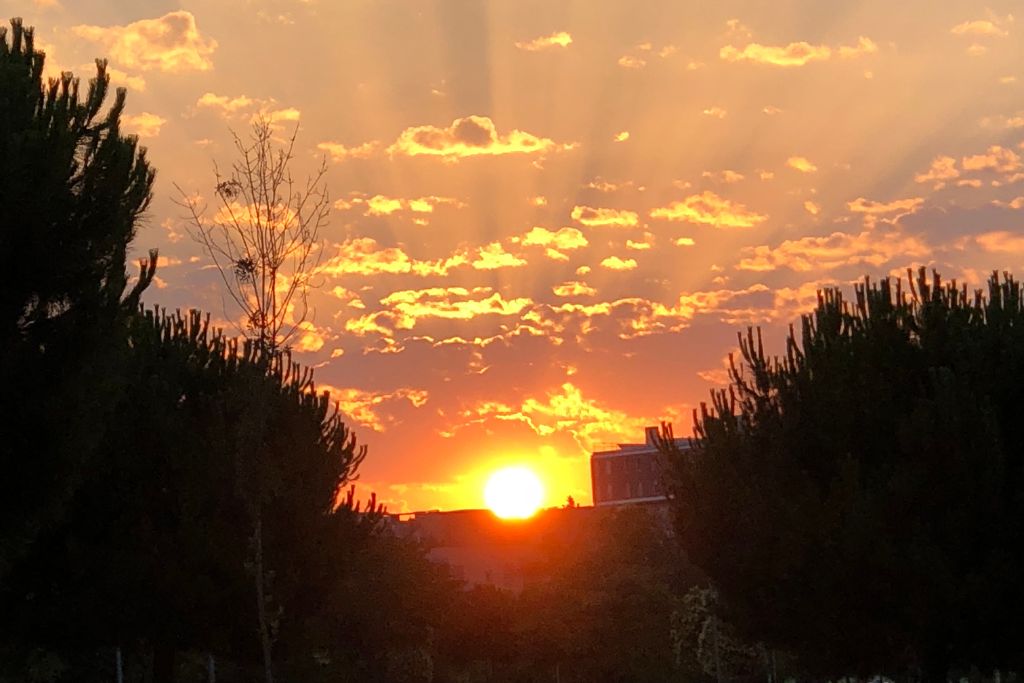
- Sunlight: Place it in a spot where it can bask in the gentle sunlight for a few hours, allowing the light to renew its energy.
- Fire: Carefully pass it through the flame of a candle, letting the fire’s energy purify and revitalize the crystal.
- Crystal Gazing: Focus your gaze on it while holding a Clear Quartz crystal, envisioning the Quartz absorbing any negative energy and leaving the Rosasite cleansed and refreshed.
Questions and Answers
No, Rosasites do not fade easily, but it is recommended to keep them away from direct sunlight to maintain their color vibrancy.
Yes, Rosasites can safely come into contact with water without being damaged.
No, Rosasite is relatively durable and does not break easily, but it should still be handled with care to prevent any potential damage.
It is best to avoid exposing Rosasite to prolonged direct sunlight as it may affect the color and vibrancy of the crystal.
Genuine Rosasite typically exhibits a vibrant blue-green color with characteristic banding or botryoidal formations. It can be verified through its appearance, hardness, and other physical properties.
No, Rosasite does not usually exhibit fluorescence or glow under black light.
To care for Rosasites, it is advisable to clean them gently using a soft cloth or brush. Avoid using harsh chemicals or cleaners, and store them in a cool and dry place away from sunlight to preserve their natural beauty.
No, Rosasite is generally not considered expensive and is relatively affordable compared to some other gemstones.
Rosasite pairs well with Malachite, Azurite, Hemimorphite, and Chrysocolla, as they share complementary colors and energetic properties.
No, Rosasite is not considered toxic. However, it is always recommended to handle any crystal with care and wash your hands after handling minerals.
No, Rosasite is not a type of Rose Quartz. They are two different minerals with distinct chemical compositions and properties. Rosasite is a copper carbonate hydroxide mineral, while Rose Quartz is a variety of Quartz known for its pink color.
Interactions with Rosasite
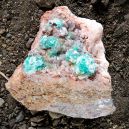
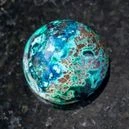
Rosasite vs. Chrysocolla
Rosasite, associated with Neptune, and Chrysocolla, connected to Venus, can be worn together to harmonize emotions and enhance communication from the heart.
| Crystal | Rosasite | Chrysocolla |
| Chakras | Root, Sacral, Solar Plexus, Heart, Throat, Third Eye, and Crown. | Crown, Third Eye, Throat, Heart, Solar Plexus, and Root. |
| Ruling Planet | Neptune | Venus |
| Ruling Element | Water | Earth |
| MOHS | 4 | 2.5 to 3.5. |

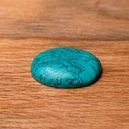
Rosasite vs. Turquoise
Rosasite, associated with Neptune, and Turquoise, connected to Jupiter, can be worn together to combine the energies of Water and Air, enhancing spiritual insight, intuition, and expansion.
| Crystal | Rosasite | Turquoise |
| Chakras | Root, Sacral, Solar Plexus, Heart, Throat, Third Eye, and Crown. | Heart, Throat, and Third Eye. |
| Ruling Planet | Neptune | Jupiter |
| Ruling Element | Water | Fire, Air, and Earth. |
| MOHS | 4 | 5 to 6. |

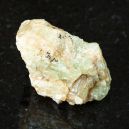
Rosasite vs. Chrysoberyl
Rosasite, ruled by Neptune, and Chrysoberyl, governed by the Sun, create a synergistic blend when worn together, harmonizing water and fire energies.
| Crystal | Rosasite | Chrysoberyl |
| Chakras | Root, Sacral, Solar Plexus, Heart, Throat, Third Eye, and Crown. | Root, Sacral, Solar Plexus, Heart, Throat, Third Eye, and Crown. |
| Ruling Planet | Neptune | Sun |
| Ruling Element | Water | Fire and Light. |
| MOHS | 4 | 8.5 |
Most viewed articles from Rosasite Crystal
